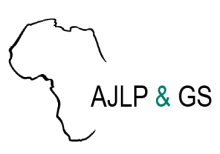Land Library Search
Through our robust search engine, you can search for any item of the over 73,000 highly curated resources in the Land Library.
If you would like to find an overview of what is possible, feel free to peruse the Search Guide.
/ library resources
Showing items 10 through 18 of 2217.Although Ghana is a leading global cocoa producer, its production and yield have experienced declines in recent years due to various factors, including long-term climate change such as increasing temperatures and changing rainfall patterns, as well as drought events.
This article explores deforestation and reforestation dynamics over 415,749 hectares of 25 titled Indigenous Community Lands (ICLs) in the Peruvian Amazon over forty years at three scales: total area, regions, and communities.
The acceleration of deforestation is one of the unexpected consequences of the signing of the Peace Agreement between the Colombian government and the FARC-EP guerrilla in 2016.
Springs are the most important source of water for the people in the mid-hills of the Himalaya.
Mixed farming is defined as agricultural production systems with the integration of crops, agroforestry, fisheries, and livestock in a system approach. Crops and livestock are critical components of the mixed farming system.
Crop type mapping is essential to agriculture applications, including yield estimates, crop planting acreage statistics, agricultural market predictions, and land use change analysis that support relevant decision-making. Since 2008, the U.S.
We present an application of the method to the Thoria watershed in India. We analyze land cover changes in the Thoria watershed between the years 2000, 2020 and future scenarios, and subsequently map the above-ground carbon stock using the InVEST model along with remotely sensed data.
BackgroundStudies which have been conducted so far have focused on the processes of land use/cover changes in different areas at regional and global scale.
As the COVID-19 pandemic unfolded, questions arose as to whether the pandemic would amplify or pacify tropical deforestation. Early reports warned of increased deforestation rates; however, these studies were limited to a few months in 2020 or to selected regions.


